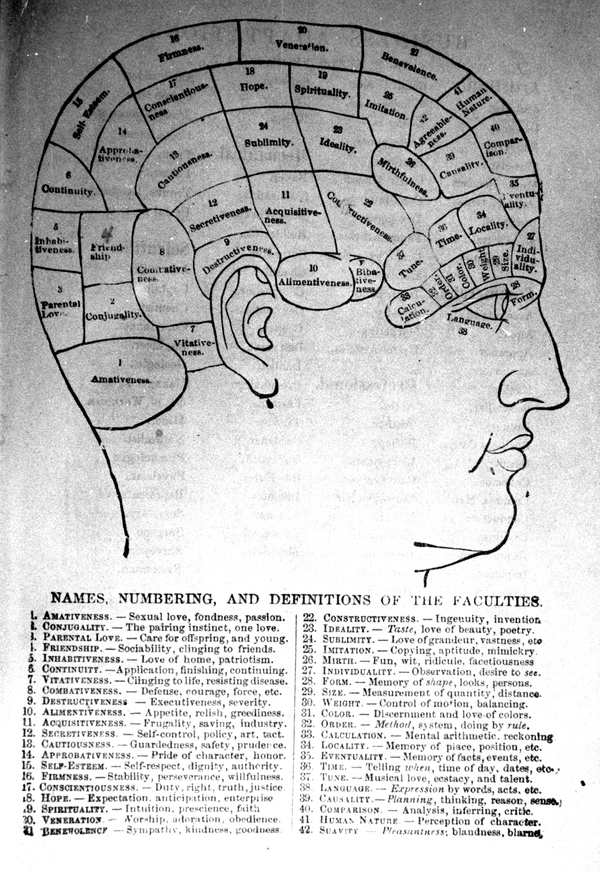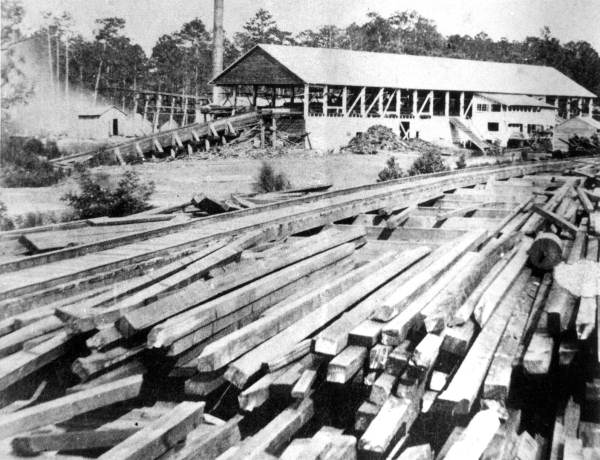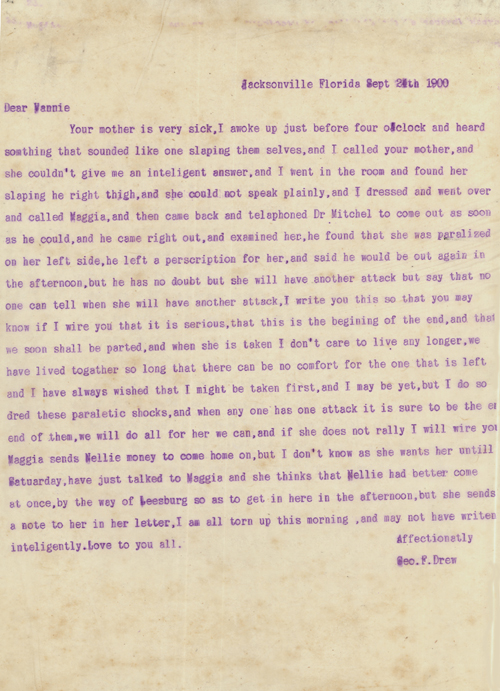Description of previous item
Description of next item
How's Your Head, Governor Drew?
Published April 4, 2018 by Florida Memory
Can you guess which Florida governor weighed 185 pounds, had a brain 23¼ inches in diameter and was reportedly an uncommonly good judge of character? Stumped? To be fair, we wouldn’t have known either, had he not taken the time to consult a phrenologist while visiting New York in 1867. We recently came across the phrenologist’s report in this governor’s family papers and made it available on Florida Memory.
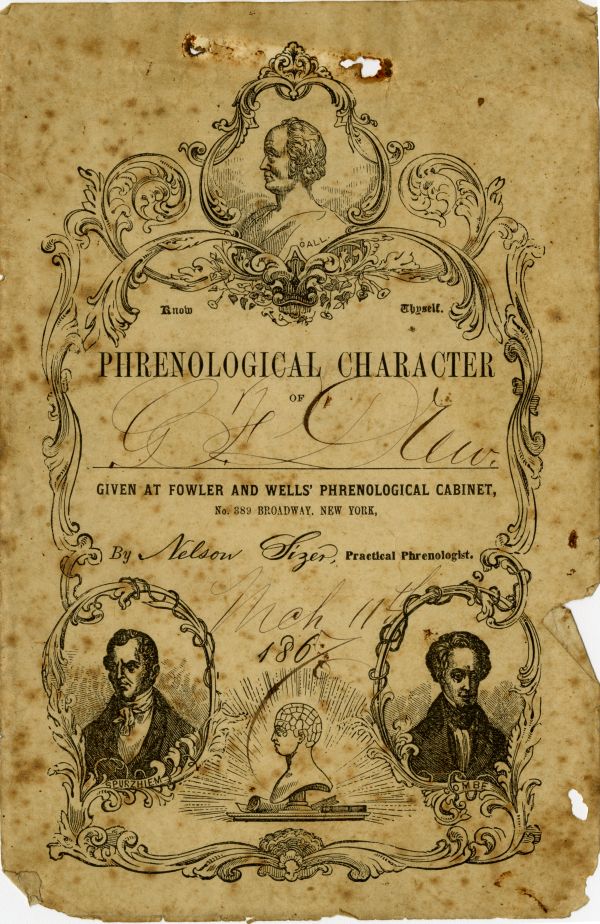
Cover of a phrenological character reading of George Franklin Drew, conducted by phrenologist Nelson Sizer on March 11, 1867 in New York City. Click the image to view the entire report.
Phrenology was a pseudo-science popular mainly in the early 19th century. Its founders, German physicians Franz Joseph Gall and Johann Spurzheim, claimed it was possible to determine the size and mental capacity of a person’s brain based on the bumps and indentations on the outside of the head. Phrenologists, who soon popped up on both sides of the Atlantic, would take measurements of a person’s head, note the places where it seemed to either be bulging or denting, and then write a report explaining the person’s character. The assumption was that every area of the brain covered a different aspect of personality and behavior. The more brain matter you had in a particular region, the more pronounced the corresponding trait would be.
Now a bit about Governor Drew. George Franklin Drew was born August 6, 1827, in New Hampshire, and got his start as a machinist’s apprentice in Massachusetts. At the age of 20, he moved to Columbus, Georgia, and started up his own machine shop before turning to the lumber industry. When the Civil War broke out in 1861, Drew opposed secession, which didn’t sit well with some of his neighbors, and he spent most of the war confined in Savannah.
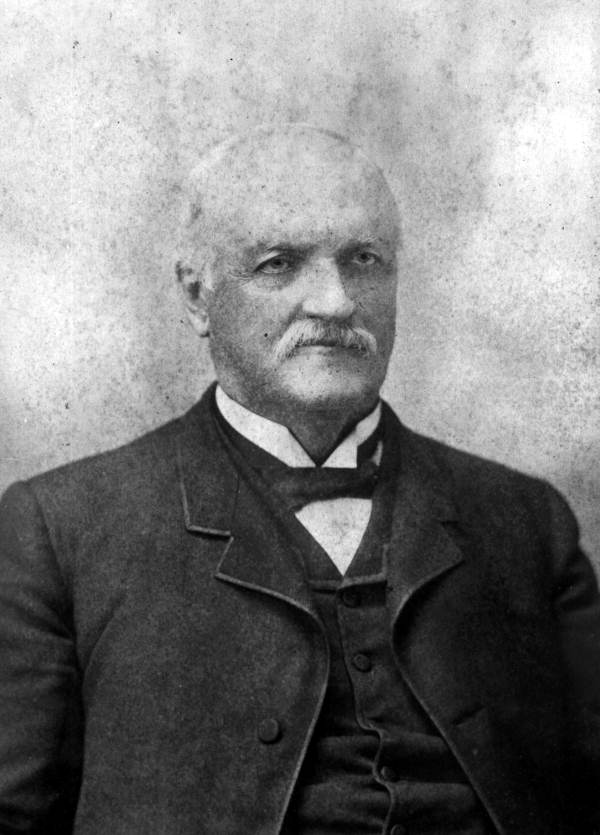
Portrait of George Franklin Drew, likely taken during his administration as Florida’s 12th state governor (1877-1881).
After the war, Drew originally intended to move with his family to Brazil, but he only made it as far south as Suwannee County, Florida, where he invested his remaining fortune in timber land and a sawmill. He later moved his operation to Ellaville in Madison County, and built what was then believed to be the largest sawmill in the South.
It was during this era of his life that Drew visited New York City, probably on business, and happened to stop by the Fowler and Wells Phrenological Cabinet, a museum with plaster casts of heads and skulls and all kinds of memorabilia associated with the phrenology movement. While there, he received a full phrenological workup from Nelson Sizer, professor of “mental science” in the American Phrenological Institute and associate editor of the American Phrenological Journal. Sizer’s report on Drew was lengthy, but here are a few of the characteristics he “discovered” in the future governor while examining his head:
- He was a good judge of character.
- He appreciated people of principle and expected others to practice what they preached.
- He liked to eat. Sizer wrote, “You have a strong appetite, which should be regulated.”
- He was eager to be respected.
Sizer also offered Drew some advice, mainly regarding his diet:
- Avoid pork and pastry and “highly seasoned things.”
- Don’t use tobacco.
- Eat lean beef and tart fruits and cut down on butter and sugar.
Sizer’s report was vague, but his overall positive view of Drew’s talent for business and management seemed to ring true. Drew’s lumber operations continued to grow, and he expanded into railroads and the mercantile trade as well. In 1870, he became chairman of the Madison County Commission, and in 1876 Florida’s Democratic Party nominated him for governor. The election results were close in both the presidential and gubernatorial elections that year. The initial returns gave the governorship of Florida to the incumbent, Marcellus Stearns, but a Supreme Court-mandated recount revealed George Franklin Drew as the winner. Drew served one term as governor, the first Democrat to hold that office since Florida had been readmitted to the Union after the Civil War. His administration effectively ended Reconstruction in Florida, and no Republican would again occupy the governor’s mansion until Claude Kirk took office in 1967.
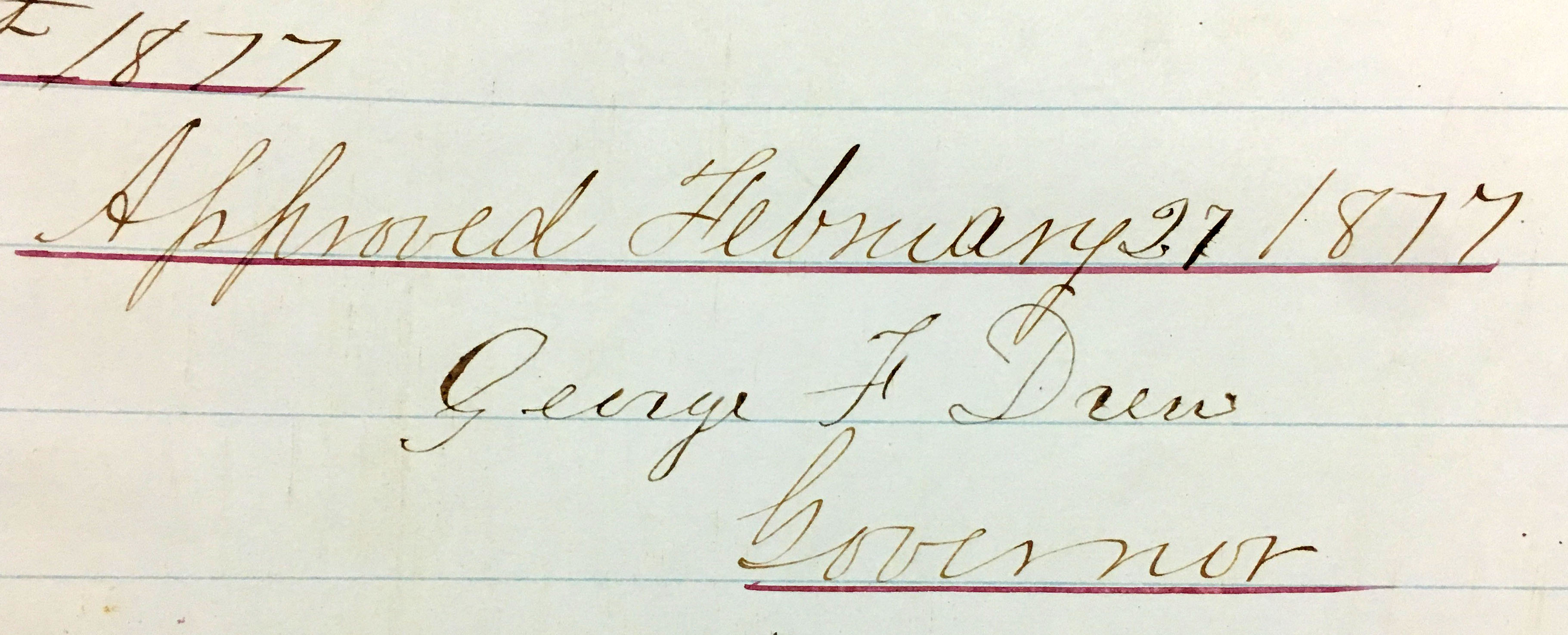
Governor Drew’s signature, in this case applied to a legislative act establishing a game hunting season. Volume 69, Acts and Resolutions of the Legislature (Series 222), State Archives of Florida.
Shortly after returning to private life, Drew sold off his lumbering interests and moved to Jacksonville, where he spent the remainder of his days. On September 24, 1900, Drew’s wife Amelia experienced a stroke, which the former governor described in a letter to their daughter Vannie. “We have lived together so many years,” he wrote, “that I don’t care to live after she is taken away.” Drew meant what he said. Two hours after Amelia died on September 26th, Governor Drew himself collapsed and died. The local newspaper diagnosed the cause as simply a broken heart.
Looking for more information about Florida’s governors? Try searching the Florida Photographic Collection or Selected Documents!
Cite This Article
Chicago Manual of Style
(17th Edition)Florida Memory. "How's Your Head, Governor Drew?." Floridiana, 2018. https://www.floridamemory.com/items/show/332829.
MLA
(9th Edition)Florida Memory. "How's Your Head, Governor Drew?." Floridiana, 2018, https://www.floridamemory.com/items/show/332829. Accessed December 23, 2025.
APA
(7th Edition)Florida Memory. (2018, April 4). How's Your Head, Governor Drew?. Floridiana. Retrieved from https://www.floridamemory.com/items/show/332829

 Listen: The Folk Program
Listen: The Folk Program